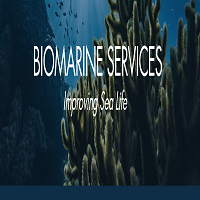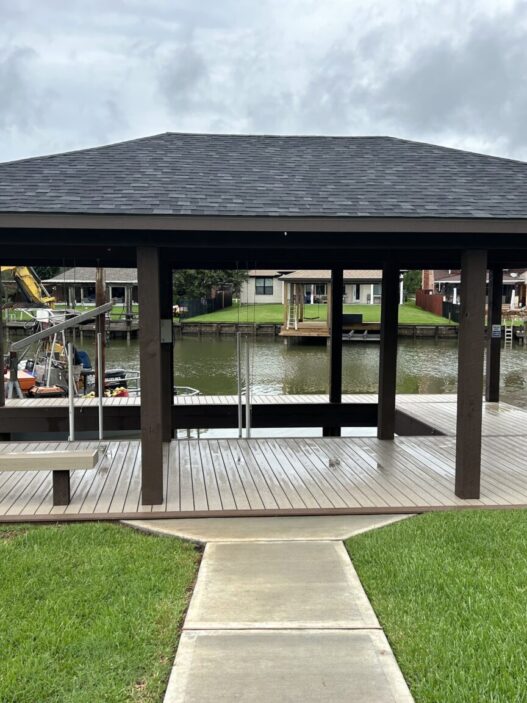What is VGP Testing?
VGP (Vessel General Permit) testing is a regulatory requirement for vessels operating in U.S. waters, designed to ensure that discharges from these vessels do not harm the marine environment. The Vessel General Permit, issued by the U.S. Environmental Protection Agency (EPA), sets limits on pollutants that vessels are allowed to discharge, such as bilge water, ballast water, and deck runoff. VGP testing plays a critical role in monitoring these discharges and ensuring compliance with environmental standards.
Purpose of VGP Testing
The purpose of VGP testing is twofold: first, to protect marine ecosystems by reducing harmful pollution from vessels, and second, to ensure that vessel operators meet the strict environmental regulations imposed by the EPA. Non-compliance can result in significant penalties, making VGP testing not just an environmental necessity but also a legal requirement for vessels operating in U.S. waters.
Importance of VGP Testing
Environmental Protection
Vessels discharge various types of waste, including oil, chemicals, and sewage, which can cause significant harm to marine life if not properly treated or managed. VGP testing ensures that vessels adhere to strict effluent limits, helping to prevent pollution and protect the biodiversity of oceans and coastal areas.
Compliance with Regulations
VGP testing is essential for compliance with the EPA’s regulatory framework. It ensures that vessels operating in U.S. waters meet the discharge limits set by the Vessel General Permit. Compliance is not optional—failure to follow the guidelines can lead to severe fines, legal action, or even the suspension of the vessel’s operating license.
Avoiding Penalties
By conducting regular VGP testing, vessel operators can avoid costly penalties associated with non-compliance. The EPA enforces strict penalties for vessels that fail to meet discharge requirements, including fines that can reach up to thousands of dollars per day of violation. Effective VGP testing ensures that all discharge systems are functioning within legal parameters, minimizing the risk of financial repercussions.
Key Components of VGP Testing
Effluent Limits
One of the core aspects of VGP testing is ensuring that vessel discharges do not exceed the specified effluent limits. These limits apply to various pollutants, including oil, grease, chemicals, sewage, and ballast water. Vessels must be equipped with systems that treat or manage these discharges to meet the EPA’s standards. Monitoring these pollutants is critical to preventing environmental damage.
Monitoring and Reporting Requirements
Vessels covered under the VGP are required to regularly monitor their discharges and report the findings to the EPA. This includes documenting the types of discharges, the amounts, and the results of any chemical or biological tests conducted on the effluents. Accurate reporting is essential to demonstrate compliance and avoid fines or legal actions.
Inspection and Maintenance
To ensure compliance, vessels must undergo regular inspections and maintenance of their discharge systems. This includes the upkeep of bilge water separators, ballast water treatment systems, and sewage treatment plants. Regular maintenance helps to prevent system malfunctions that could lead to non-compliant discharges. Inspections are a proactive way to ensure that equipment is operating correctly and efficiently.
The VGP Testing Process
Pre-Voyage Preparations
Before a vessel begins its journey, a series of pre-voyage checks must be completed to ensure VGP compliance. This includes reviewing the VGP documentation and verifying that all discharge systems are operational. Ensuring that the vessel is properly equipped with compliant discharge technology is essential to avoid problems during the voyage.
Sampling and Monitoring
During the voyage, vessel operators are required to take water and discharge samples to monitor the quality of effluents. These samples are sent to laboratories for analysis to ensure that discharge levels are within the permissible limits set by the VGP. Monitoring systems on board, such as oil-water separators, can also provide real-time data on effluent quality.
Reporting and Record-Keeping
Accurate record-keeping is an essential part of the VGP testing process. Vessel operators must document all testing results and submit regular reports to the EPA. This documentation must include the dates of inspections, sample collection results, and any corrective actions taken to address issues. Proper record-keeping ensures that vessels have a clear paper trail of their compliance efforts.
Common Challenges in VGP Testing
Operational Difficulties
Conducting VGP tests during a voyage can be challenging due to weather conditions, equipment malfunctions, or limited crew availability. For example, rough seas can make it difficult to safely collect discharge samples, while equipment failures can lead to inaccurate readings. Operators must be prepared to address these challenges by having contingency plans and redundant systems in place.
Compliance Gaps
Despite best efforts, there can be gaps in compliance, such as missed inspections or inaccurate monitoring. These gaps often result from inadequate training of crew members or insufficient resources for proper maintenance of discharge systems. Addressing these issues through continuous crew training and regular system audits is crucial to maintaining full compliance.
High Costs of Compliance
Maintaining VGP compliance can be costly for vessel operators. The expense of purchasing and maintaining equipment, conducting regular tests, and completing necessary repairs can add up quickly. However, the costs of non-compliance, including potential fines and legal fees, are far greater. Investing in the right tools and technologies for VGP compliance is ultimately a cost-effective solution.
Best Practices for Effective VGP Testing
Comprehensive Training for Crew
One of the best ways to ensure effective VGP testing is to provide thorough training for the crew. Crew members need to understand the importance of environmental compliance and be well-versed in the testing procedures. Training programs should cover how to collect samples, operate discharge systems, and maintain accurate records.
Routine Inspections
Regular inspections of discharge systems and related equipment are critical to avoiding compliance issues. Inspections should be scheduled frequently to catch any potential problems early and ensure that all systems are functioning properly. Early detection of issues through routine inspections can prevent more significant problems down the line.
Accurate Record-Keeping
Maintaining precise records of all tests, inspections, and maintenance activities is essential for VGP compliance. These records must be readily available for review by the EPA or other regulatory bodies. Detailed logs ensure that vessel operators can demonstrate their commitment to environmental protection and compliance with the VGP.
Tools and Technologies for VGP Testing
Testing Equipment
There are various pieces of equipment essential for VGP testing, including oil-water separators, ballast water treatment systems, and sewage treatment plants. These tools help reduce pollutants in discharge streams and ensure compliance with EPA standards. Regular calibration and maintenance of this equipment are crucial to ensuring accurate results.
Software Solutions
Digital tools and software can streamline the monitoring and reporting processes for VGP compliance. Automated systems can track discharge data in real-time, flag potential compliance issues, and generate reports for submission to regulatory agencies. This reduces the administrative burden on vessel operators and improves the accuracy of record-keeping.
Case Studies/Examples
Real-world Application of VGP Testing
For example, a large shipping company operating vessels in U.S. waters implemented an advanced VGP compliance program that included automated monitoring systems and regular crew training. This proactive approach enabled the company to avoid any non-compliance issues during EPA inspections and significantly reduced their environmental footprint. By investing in up-to-date technology and thorough training, the company maintained compliance without incurring penalties, saving both operational and environmental costs.
Conclusion
Summary of the Importance of VGP Testing
VGP testing is an essential part of protecting the marine environment and ensuring compliance with EPA regulations. By adhering to the standards set by the Vessel General Permit, vessel operators not only avoid legal penalties but also contribute to a healthier marine ecosystem. The benefits of investing in VGP testing far outweigh the costs, as compliance ensures sustainable operations and long-term success.
Future Trends in Maritime Environmental Compliance
As environmental regulations continue to evolve, future trends in VGP testing may include the adoption of more advanced technologies such as IoT-based sensors for real-time monitoring, AI-driven analysis for predicting potential compliance issues, and automation of reporting processes. These innovations will likely make it easier for vessel operators to stay compliant while minimizing their environmental impact.










